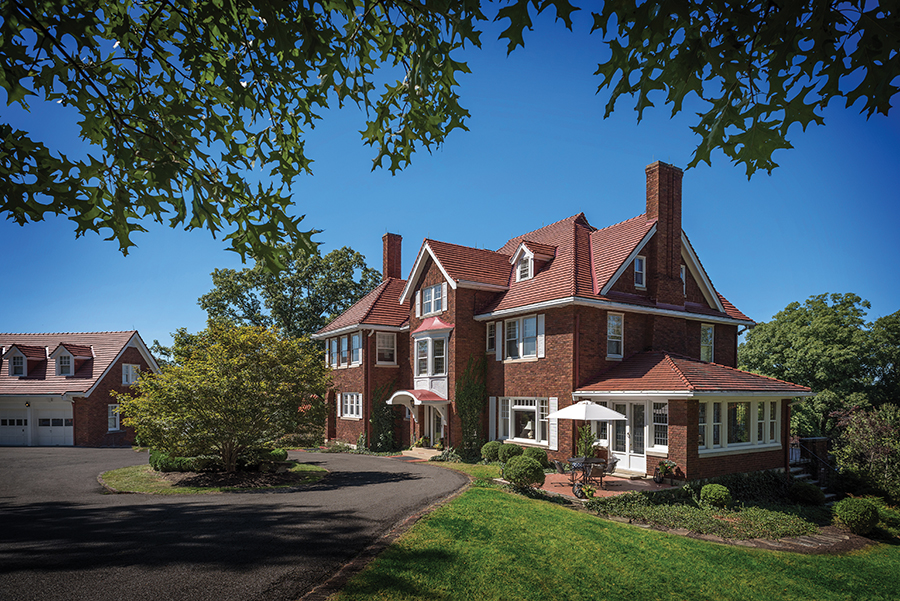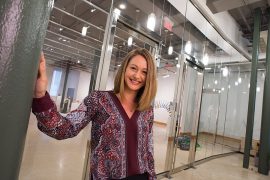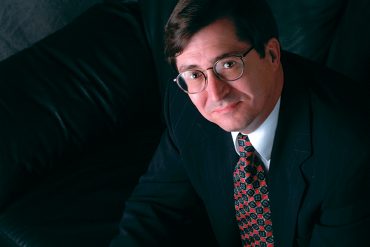William and Mary Brown’s Huntington home is one with treasured past and countless family memories that, together, tell a remarkable story.
By Molly McClennen
HQ 95 | AUTUMN 2016
Some years ago, when they were a young couple dating, William Brown drove Mary, the woman who would one day become his wife, to look at a stately brick house perched high on a hill overlooking Huntington. First called The Hemlocks and later the Francis Home, it had been William’s dream house ever since he had been invited by a friend to swim there as a child. As they admired the home that night, little did Mary know one day she and William would call 250 Ridgewood Road home.

“When William said he wanted to buy this house, I told him I was very happy in our old home, but he said, ‘No, this is the home for our family.’ And he was right,” Mary says.
Since it was built in 1924, the house has been a home to a succession of Huntington families, beginning with the man who built it, J.D. Francis, the president of Island Creek Coal and one of the richest men in Huntington.
“This house, from the beginning, was a home. Mr. Francis could have built a mansion, but he built a home for his family,” Mary says.
Mary and William got a rare glimpse into the Francis family’s daily life through a treasure they discovered at an estate sale: a box of 9 mm movies filmed at the home in the 1930s and 1940s. The movies showed Francis’ daughter, Permele, playing with her pet kittens in the house, chasing a sheep across the lawn, and riding a pony on the grounds.
“We want to honor those who made this their home before us. Mr. Francis did so many things to help this community. Especially after seeing those films and watching their children play here, we feel like we owe it to the Francis family to appreciate the legacy of this house,” Mary says.

Mary and William, along with sons Will, Harrison and Dewey, make use of every one of the house’s 22 rooms, often repurposing them to accommodate modern needs. The house also has nine bathrooms and nine fireplaces. Every member of the family has a spot they’ve made their own, including dog Barkie and cat Lexie. The chauffeur’s cottage is now Mary’s art studio. The landing of the home’s graceful, three-story staircase provides the best reading spot in the house according to Mary, and is remembered as being the favorite napping spot for Charlie Brown, the family’s beloved dog, when he was alive.

After they had lived in the home for 10 years, the Browns hired architect Brian Kent Jones of Columbus and contractors Earl and Jerry Adkins to design and construct a three-story addition, providing modern amenities while being careful to preserve the original portion of the house. The addition includes a man cave and home theater on the lower level that open out to the pool area. A new kitchen, family room, butler’s pantry and eating area are on the main level, which also features a wrap-around porch that overlooks the city. A master suite, sun porch and bathroom are on the second floor.
West Virginia Electric Supply Co. supplied the fixtures in the addition, but the fixtures in the older part of the home are all original. The home’s kitchen, designed by Chandler’s, replaced the much smaller original kitchen left from the days when hired help did the cooking. The new kitchen opens up into the family room so Mary can spend time with her husband and sons while preparing dinner.
Other than the addition, Mary says she has been careful not to change the home’s original character.

“I have had people tell me I need to change things, update things, like, you need to take down that leaded glass window. But why would I do that? It’s beautiful. When this house was built, it was a time when you appreciated what you had. People repaired instead of throwing things away,” Mary says.
The home’s hillside location allows for stunning, 180-degree views of Huntington. The Florida room looks out on a sea of colorful spring or fall foliage depending on the season. Then, when the leaves fall, the family is treated to views of the city lights. “It’s like Christmas,” Mary says. They can watch Huntington’s riverfront fireworks from their windows.
But nothing compares to the views they have at sunrise and sunset. “The people who live up here call them ‘Ridgewood sunsets.’ They are unbelievable,” Mary says.

Relying on old photographs and the old home movies they had found as guides, the Browns sought to replicate aspects of the house’s original décor. Mary did the decorating herself with help from Mary G. Gervais of Celebration, Florida. The home is filled with family photographs spanning the generations, heirloom furniture, and pieces from William’s father’s art collection. A quilt, made for Mary as a birthday gift from her mother, adorns the wall of her bedroom.
“Every single piece of furniture in our house has a story. We either found it together or it belonged to family. Everything has ties back to family. Our things are all sort of antique and nothing goes together, but when you step back, it does,” Mary explains.
In addition to being the ideal place to raise a family, the home has its share of interesting stories. The home was originally heated by coal, and the coal storage area is still intact. Because J.D. Francis was an advisor to President Franklin D. Roosevelt, First Lady Eleanor Roosevelt was a guest in the home during a visit to Huntington. An oak tree that used to stand in the yard is said to have been used by George Washington when he surveyed Virginia. And the property was home to the first residential swimming pool in Huntington.

Bullet holes of unknown origin pock another tree in the yard, perhaps a remnant of the time a man of “questionable repute” briefly lived in the house.

But the stories Mary, William and their sons most treasure are the ones they have created as a family. They remember sledding down the hill, Christmas and birthday celebrations and the times their basement recreation room was filled with teens for Young Life events.

“There is not one thing about this house I would change,” Mary says. “But should we ever have to leave this house, the hardest thing to leave would be the memories. There are memories of my children in every corner.”





